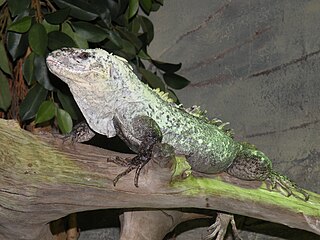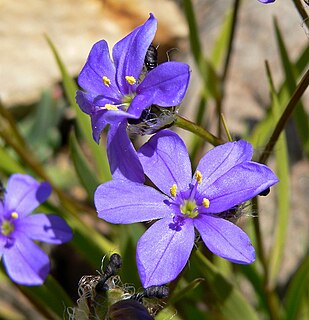The Letter of Aristeas or Letter to Philocrates is a Hellenistic work of the 3rd or early 2nd century BC, assigned by some Biblical scholars to the Pseudepigrapha.

Iridaceae is a family of plants in order Asparagales, taking its name from the irises, meaning rainbow, referring to its many colours. There are 66 accepted genera with a total of c. 2244 species worldwide. It includes a number of other well known cultivated plants, such as freesias, gladioli and crocuses.
Aristeas was a semi-legendary Greek poet and miracle-worker, a native of Proconnesus in Asia Minor, active ca. 7th century BC. The Suda claims that, whenever he wished, his soul could leave his body and return again. In book IV.13-16 of The Histories, Herodotus reports

Angophora is a genus of nine species of trees and shrubs in the myrtle family, Myrtaceae. Endemic to eastern Australia, they differ from other eucalypts in having juvenile and adult leaves arranged in opposite pairs, sepals reduced to projections on the edge of the floral cup, four or five overlapping, more or less round petals, and a papery or thin, woody, often strongly ribbed capsule. Species are found between the Atherton Tableland in Queensland and south through New South Wales to eastern Victoria, Australia.

Delphinium bakeri, or Baker's larkspur, is a species of perennial herb in the buttercup family, Ranunculaceae. It is endemic to California in the United States, where it is a federally listed endangered species. It is known in the wild from one remaining occurrence near Salmon Creek in Sonoma County, where only seven plants remained as of March 2006.

Cupressus bakeri, reclassified as Hesperocyparis bakeri, with the common names Baker cypress, Modoc cypress, or Siskiyou cypress, is a rare species of cypress tree endemic to a small area across far northern California and extreme southwestern Oregon, in the western United States.
Aristeas was a 7th-century BC Greek poet.

Ctenosaura bakeri, also known as the Utila iguana, Baker's spinytail iguana, swamper or wishiwilly del suampo, is a critically endangered species of spinytail iguana endemic to the island of Utila, one of the Islas de la Bahía off the coast of Honduras in the Caribbean.

Aristea is a genus of evergreen, perennial and rhizomatous species of flowering plants in the family Iridaceae, first described in 1789. The genus is distributed in tropical and southern Africa, as well as Madagascar. The genus name is derived from the Greek word arista, meaning "awn".

Arctostaphylos bakeri is a species of manzanita known by the common name Baker's manzanita. It is endemic to Sonoma County, California, where it grows in the chaparral and woodlands of the North Coast Ranges. It is sometimes a member of the serpentine soils flora.
Crepis bakeri is a species of flowering plant in the daisy family known by the common name Baker's hawksbeard. It is native to the western United States where it grows in many types of mountain and plateau habitat. It is found in Oregon, Washington, Idaho, northern California, Nevada, and Utah.

Angophora bakeri, commonly known as the narrow-leaved apple, is a species of tree that is endemic to New South Wales. It has rough, fibrous bark on the trunk and branches, lance-shaped adult leaves, flower buds in groups of three or seven, white or creamy white flowers and oval to cylindrical fruit.

Peninsula Granite Fynbos is an endangered Fynbos vegetation type which is endemic to the city of Cape Town and occurs nowhere else. It is a unique type of tall, dense and diverse scrubland, scattered with trees. It can be found all along the belt of granite that encircles Table Mountain.

Durbanville Nature Reserve is a 6-hectare (15-acre) piece of protected land, located next to the Durbanville Racecourse in the Western Cape, South Africa.

Aloe bakeri is a species of flowering plant in the family Asphodelaceae, native to Madagascar. Growing to 10–20 cm (4–8 in) tall by 40 cm (16 in) wide, it is an evergreen perennial forming multiple rosettes of spidery succulent green or reddish-green toothed leaves, heavily mottled with white. In summer it produces red or orange, green-tipped tubular flowers.
Aristea cantharophila is a plant species endemic to a small region of Western Cape Province, South Africa, Southeast of Cape Town. Type locality is in the Hottentots Holland Mountains near Sir Lowry's Pass. The species is facing serious threats and has been slated for conservation efforts.
Milo Samuel Baker (1868–1961) was an American botanist, specializing in plants of the northern coastal region of California, as well as the genus Viola.











